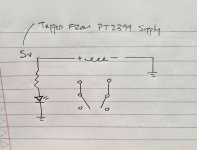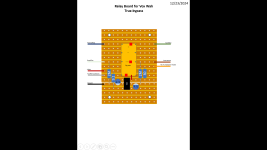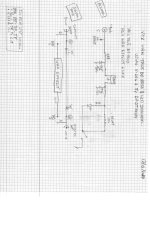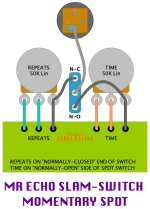So with the DPDT, you could have poleA work the switching and poleB activate the LED — or do you have a method of grounding the LED with the SPDT?
I repurposed the stock SPDT of a Vox wah which has a very long thread neck to reach the treadle that no 3PDT that I could source could be found. The stock SPDT becomes in essence a SPST for grounding the relay coil and the LED indicator at teh same time. The common lug is sent to ground and the switched lug (pick one) is connected to the relay coil and LED cathode. I send the +5VDC (post 7805 regulator) to the relay and the LED via a 30 Ohm resistor, with the LED circuit in parallel with the relay coil.
The +9VDC goes to the stock wah circuit and also to the 7805 regulator for the switching.
The advantages of this relay-based true bypass design are:
-
Improved reliability: You know the stock stomp switch will fit, work and be available when it wears out, versus buying a DPDT or 3PDT stomp
switch.
-
Quiet switching: 3DPT stomp switches have three times the mechanical movement, take more pressure to actuate and are therefore,
louder. They also have true bypass pops, if you do not add strategically placed 1M resistors.
-
Comparable cost: The cost of components (Terro board, 5VDC DPDT relay, resistors, LED, 22 gauge hook up wire, solder) is about the same as
the cost of a single 3PDT switch (less than $6).
-
Indicator light: Wah's are notorious for remaining 'in-effect mode' when you think you've toed it off, then a quarter song later you realize it is
still engaged. The LED indicator helps verify that quicker.
-
Comparable sourcing parts and build time: Some wahs can use easy to find DPDT or 3PDT stomp switches, but many cannot. I can build
(from scratch) and install this assembly in about 30 minutes (obviously your first time may likely have a learning curve and take longer). When
replacing the stock stomp switch with another, you sometimes need to make the hole bigger, often have to shim with washers and nuts to get
the height to actuate correct.
Enjoy!





